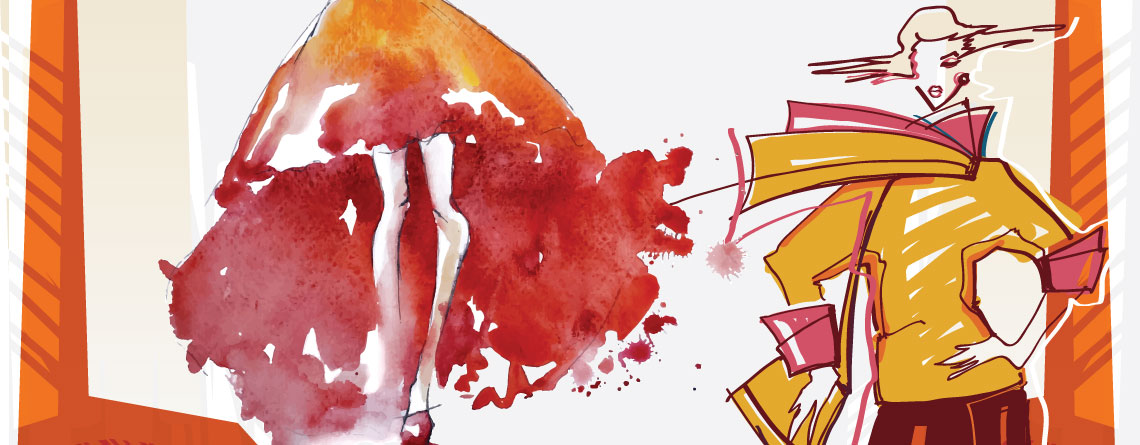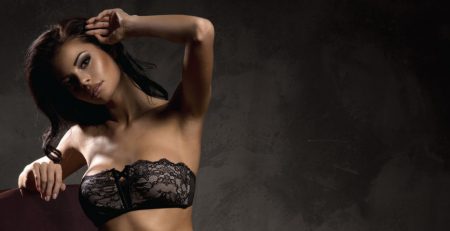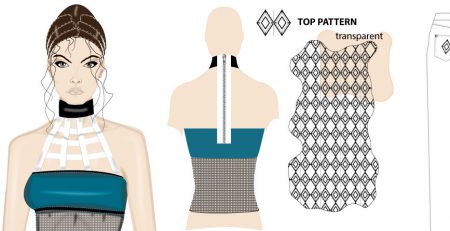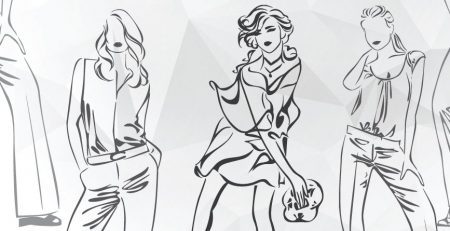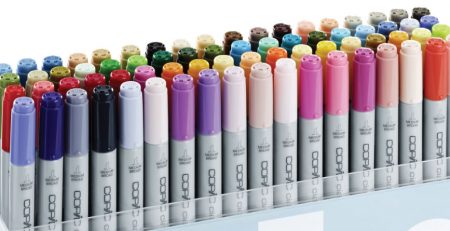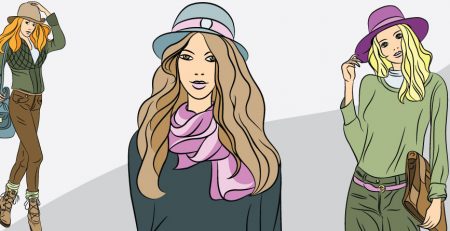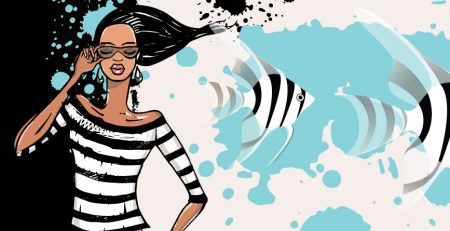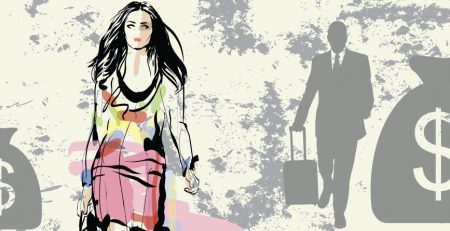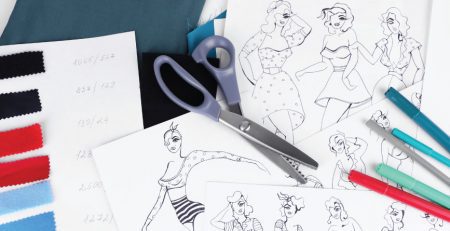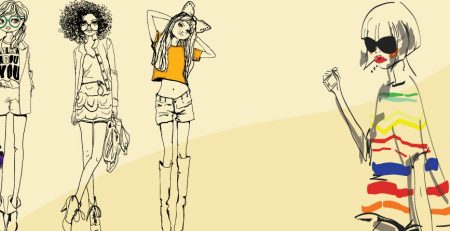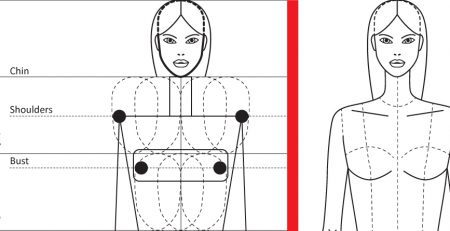One of the most important aspects of Illustrating Fashion is the ability to “loosen up.” Often a budding designer will freeze up over an important drawing, whether it’s for presentation, publication, or just to show to someone else. Spontaneity is lost and any freedom that existed in the private sketchbook suddenly becomes rigid and dull.
We can all be a bit uptight about our work; let’s face it, fashion is known as a somewhat uptight industry. A bold, flamboyant illustration is more likely to sell your concept than an overworked and nervous one, so you need to have the courage of your convictions.
One of the best exercises for practicing boldness is to allow yourself a very short time to complete each illustration. Limit yourself to quick sketches, and try out as many approaches as you can. Perhaps work on a larger sheet of paper than usual. Try different crayons and paints; if by nature you prefer a thin, hard pencil, force yourself to use bright colors applied with a wet, broad brush. Even if you return to your usual methods after the exercise, the experience of exploring different media will give your illustrations an extra zest.
Many of these experimental attempts for Illustrating Fashion are destined for the wastepaper basket, but don’t worry. There are so many ways of putting your ideas on paper: pen and ink, watercolor, oil pastel, conte, felt-tip pen, charcoal, poster paint, and soft pencil. These media can even be accompanied by colored paper and tissue, found textures, or cuttings from newspapers and magazines collaged onto the drawing. One fun exercise is to quickly sketch a friend, or even your own reflection in the mirror, resisting your natural instinct to look at the page. Try drawing in a continuous line, without taking your hand off the paper. The results might be rather bizarre, but this is a good way to practice observing your subject, and expressing what you see, without worrying about how the whole picture is developing. You can also experiment with making doodles and scribbles. These too will achieve a freedom in mark-making that will be lacking if you are too concerned with the final outcome of the picture. These scribbles and sketches should be private. It is here that you can dare to fail. In fact, you will not have achieved anything if all these experiments work, because you will not have tested yourself beyond the boundaries of your ability. It is only by going that bit further that you can make an exciting breakthrough. If you are really brave, you will keep the failed drawings as a reminder of your creative journey.

